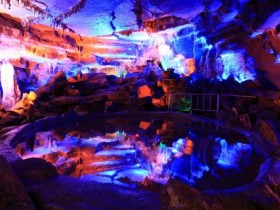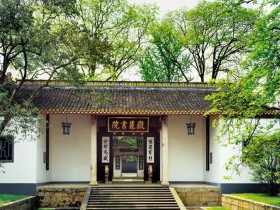Ladies and gentlemen,
Welcome to Changsha museum. We’ll be here to visit “The Exhibition of Inscribed Bamboo Tablets of Wu Kingdom of the Three Kingdoms at Changsha and The Years of Unearthed Most Valuable Cultural Relics”. I hope my explanation can satisfy you!
Now, we are in the first exhibition hall. Here, it adopts panoramic technique, and restores the site of unearthing Bamboo Tablets of Wu Kingdom. In 1996, during July to November, in the southeast of Wu Yi square, team up with Ping He Tang Department. The exhumations were carried on by Changsha relics work teams. They unearth 61 archaic wells during the Warring States period and the Ming and Qing Dynasty, and found out 3000 kinds of relics, like copper, iron bamboo, wood, ceramics, and so on. To people’s astonishment, in the No.22 archaic well, they found lots of bamboo tablets and wooden slips. After /confirm/iing, they are the relics of Sun Wu in Three kingdoms 1700 years ago. These patches of relics would replenish the lacked historical materials of three kingdoms exactly. Our country once had four discoveries: The oracle bone inscription of Yin, bamboo tablets and wooden slips of Tunxu in northwest China, Cultural books of Dunhuang stone room, Files of Qing cabinet. Bamboo Tablets of Wu Kingdom of the Three Kingdoms at Changsha can be mentioned in the same breath with the four discoveries, and become the searching subject of international academia.
Everybody! Please look at the cross section reconstruction of the NO.22 archaic well. Its upper part of opening was damaged when it was excavating. This is an irregular circular shape vertical shaft; the bottom has a bag form likely. The opening of the well has a length 3.5 m from south to north, 3.1 m from east to west, and 5.6 m in depth. The opening is covered with pure red brown color clay, 1.5 m deeper of which is the bamboo tablets and wooden slips layer. The bamboo tablets and wooden slips layer is 50 cm thick in center and 20 cm thin on all sides, piled up with slope form. The ropes tied the bamboo tablets and wooden slips have become rotten, but we can see they were buried by bundles at that time. There are more than 10,000 pieces of bamboo tablets and wooden slips by the initial statistics. The second layer is the gray brown clay layer of 3.1 m thick, among them mix up with lots of bamboo wood scrapes, grass scrapes, leaves, fragmentary bricks, pottery and porcelain and so on. At the bottom of the well is another small well, which has square wooden frame. The four corners are nailed by a stick of spile inlayed with two wooden boards as the well wall. The circle of the well is 93 cm long, 58 cm tall. The function of this small well is probably for gathering the groundwater from all sides of the well, and then put forward to pour out with water pitcher and other tools in order to maintain the well space dry. This is the living photo taken by the time of excavating.
Analyzing the structure and relics of the well NO.22, it is an ancient well for storing food. The climate of Changsha is so hot, wet and rainy that the food is easy to be rot, but the circumstance under the ground of 10 m depth is just like as a modern refrigerator. The archaeological discoveries approved that people had used this storing method from the time of Shang dynasty.
下一页
本新闻共5页,当前在第[1]页 [1] [2] [3] [4] [5]






